Notes:
The West Midlands Railway (WMR) was formed on 14 June 1860 by the union of the Oxford, Worcester & Wolverhampton Railway (OW&WR) the Newport, Abergavenny & Hereford Railway (NA&HR) and the Worcester & Hereford Railway (W&HR). The WMR was authorised to build a short branch from Old Hill, on the Great Western Railway (GWR) Snow Hill to Stourbridge Junction line, to Halesowen. This short branch was to make an end-on connection with the proposed Halesowen & Bromsgrove Branch Railway (HB&BR) thus creating a through route to Bromsgrove and Longbridge on the Midland Railways (MR) Birmingham to Gloucester route. Before construction could begin the WMR was absorbed by the GWR on 1 August 1863 and it would be the GWR who would oversee the building of the line. The contract to build the line was awarded to Henry Lovatt and the branch opened on 1 March 1878.
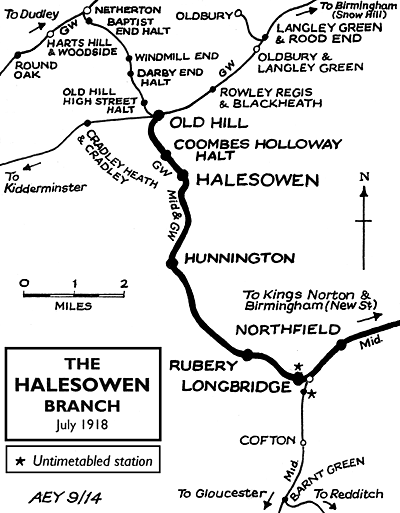 The station opened on 1 July 1905 with the introduction of a steam rail-motor service by the GWR. It consisted of a 150ft timber platform, 6ft in width, and was located on the east side of the line. Access to the station was via a steep 1 in 5 ramp from Gorsby Road with the platform itself having the distinctive GWR corrugated iron pagoda shelter that was provided at many of its halts. During April 1913 the platform and building were relocated to the west side of the line in conjunction with the construction of a triangular junction to allow trains to enter the canal basin adjacent to the Dudley Canal, Coombeswood Colliery and several other businesses including Heywood Forge and the Lion Brick Works. Access to the new station was again provided via a steep ramp from Gorsby Road. The station opened on 1 July 1905 with the introduction of a steam rail-motor service by the GWR. It consisted of a 150ft timber platform, 6ft in width, and was located on the east side of the line. Access to the station was via a steep 1 in 5 ramp from Gorsby Road with the platform itself having the distinctive GWR corrugated iron pagoda shelter that was provided at many of its halts. During April 1913 the platform and building were relocated to the west side of the line in conjunction with the construction of a triangular junction to allow trains to enter the canal basin adjacent to the Dudley Canal, Coombeswood Colliery and several other businesses including Heywood Forge and the Lion Brick Works. Access to the new station was again provided via a steep ramp from Gorsby Road.
Bradshaw’s July 1922 shows an intensive service with 24 rail-motors each way from 5.50am through to 9.53pm on Monday-to-Friday and 5.50am to 10.35pm on Saturday in the down direction from Old Hill to Halesowen. Services in the up direction started at 6.07am through to 10.00pm on Monday-to-Friday and 6.07am to 11.05pm on Saturday. The station is not listed in the timetable but appears as a footnote as ‘Halt’ Coombes Holloway, between Halesowen and Old Hill. The 9.15pm service from Old Hill returning as the 9.30pm from Halesowen is worthy of note as it ran on Wednesday and Saturday only.
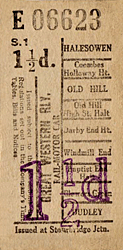 Initially passenger numbers were promising for the GWR as around 2,000 people travelled along the branch on the first Saturday of operation. Passenger receipts in the longer term never lived up to the expectations of the GWR. Even with an intensive service competition from road omnibuses would lead to their eventual withdrawal. Although the passenger service on the northern end of the line from Halesowen to Old Hill survived eight years longer than on the southern section from Halesowen to Northfield, it was withdrawn on 5 December 1927 and the station was closed. Initially passenger numbers were promising for the GWR as around 2,000 people travelled along the branch on the first Saturday of operation. Passenger receipts in the longer term never lived up to the expectations of the GWR. Even with an intensive service competition from road omnibuses would lead to their eventual withdrawal. Although the passenger service on the northern end of the line from Halesowen to Old Hill survived eight years longer than on the southern section from Halesowen to Northfield, it was withdrawn on 5 December 1927 and the station was closed.
Today nothing remains of the station site or of the embankment on which it once stood. The whole area is now part of the Halesowen Industrial Park, although a section of the embankment is still intact directly to the north of Coombs Road. The line itself remained open for goods traffic and for the passage of workmen’s trains to the British Leyland motor car factory at Longbridge. The workmen’s trains were withdrawn on 1 September 1958 with the final train having run on 29 August and the line closed as a through route in January 1964. The route through to Halesowen and the canal branch soldiered on until October 1969 when the line from Old Hill was closed.
Tickets from Michael Stewart and route map by Alan Young.
Sources:
- Bradshaw's Railway Guide July 1922
- A Regional History of the Railways of Great Britain - Volume 7 The West Midlands - Rex Christiansen - David St John Thomas Publisher 1991
- A Century of Railways around Birmingham and the West Midlands - John Boynton - Mid England Books Publisher 1999
- Lost Lines Birmingham and the Black Country - Nigel Welbourn - Ian Allan Publishing 2002/2006
- Lost Railways of Birmingham & The West Midlands - Terry Moors - Countryside Books 2008
-
To see other stations an the Halesowen branch click on the station name:
Longbridge 2nd, Rubery , Hunnington, Halesowen & Old Hill
See also:
Longbridge 1st & Longbridge 3rd |

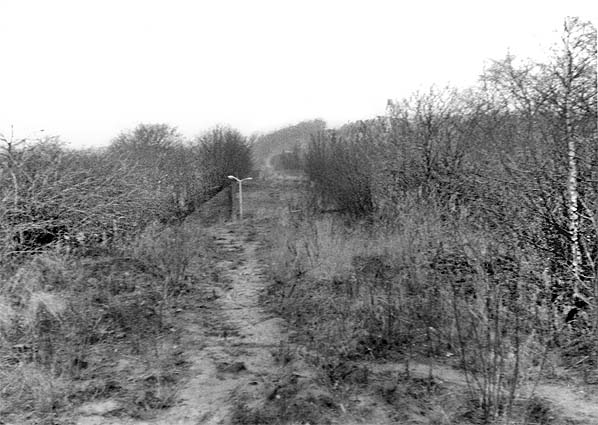
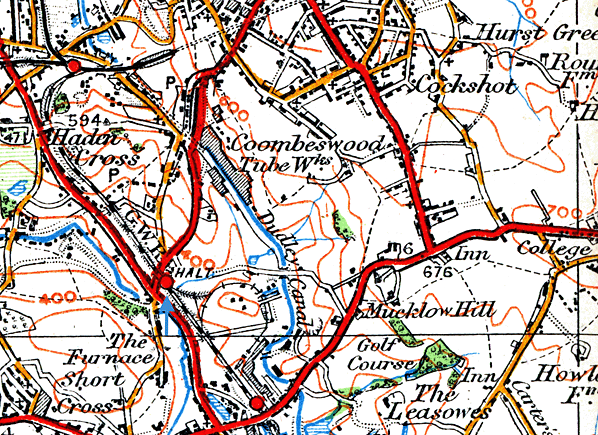
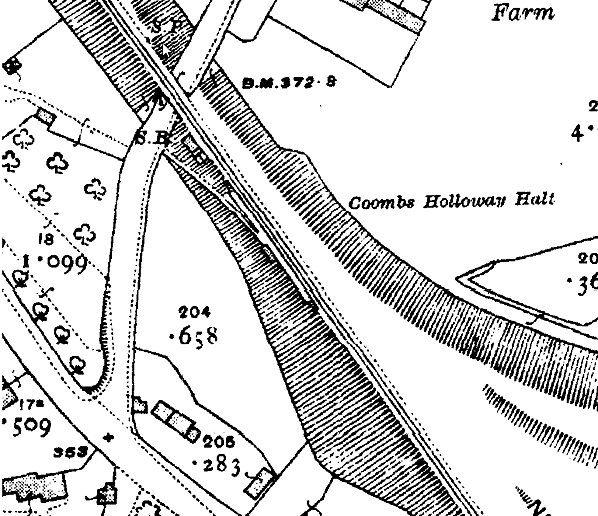
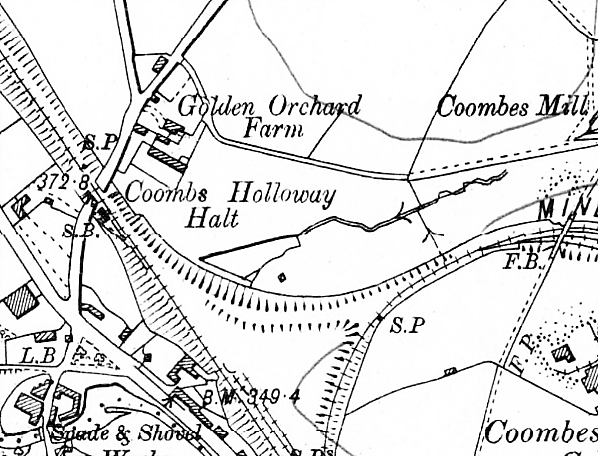
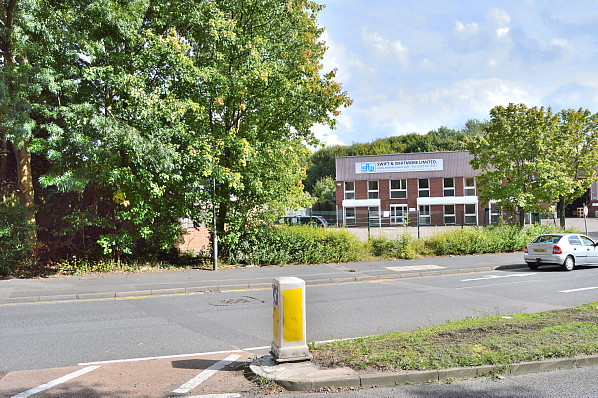
 The station opened on 1 July 1905 with the introduction of a steam rail-motor service by the GWR. It consisted of a 150ft timber platform, 6ft in width, and was located on the east side of the line. Access to the station was via a steep 1 in 5 ramp from Gorsby Road with the platform itself having the distinctive GWR corrugated iron pagoda shelter that was provided at many of its halts. During April 1913 the platform and building were relocated to the west side of the line in conjunction with the construction of a triangular junction to allow trains to enter the canal basin adjacent to the Dudley Canal, Coombeswood Colliery and several other businesses including Heywood Forge and the Lion Brick Works. Access to the new station was again provided via a steep ramp from Gorsby Road.
The station opened on 1 July 1905 with the introduction of a steam rail-motor service by the GWR. It consisted of a 150ft timber platform, 6ft in width, and was located on the east side of the line. Access to the station was via a steep 1 in 5 ramp from Gorsby Road with the platform itself having the distinctive GWR corrugated iron pagoda shelter that was provided at many of its halts. During April 1913 the platform and building were relocated to the west side of the line in conjunction with the construction of a triangular junction to allow trains to enter the canal basin adjacent to the Dudley Canal, Coombeswood Colliery and several other businesses including Heywood Forge and the Lion Brick Works. Access to the new station was again provided via a steep ramp from Gorsby Road. Initially passenger numbers were promising for the GWR as around 2,000 people travelled along the branch on the first Saturday of operation. Passenger receipts in the longer term never lived up to the expectations of the GWR. Even with an intensive service competition from road omnibuses would lead to their eventual withdrawal. Although the passenger service on the northern end of the line from Halesowen to Old Hill survived eight years longer than on the southern section from Halesowen to Northfield, it was withdrawn on 5 December 1927 and the station was closed.
Initially passenger numbers were promising for the GWR as around 2,000 people travelled along the branch on the first Saturday of operation. Passenger receipts in the longer term never lived up to the expectations of the GWR. Even with an intensive service competition from road omnibuses would lead to their eventual withdrawal. Although the passenger service on the northern end of the line from Halesowen to Old Hill survived eight years longer than on the southern section from Halesowen to Northfield, it was withdrawn on 5 December 1927 and the station was closed.

 Home Page
Home Page